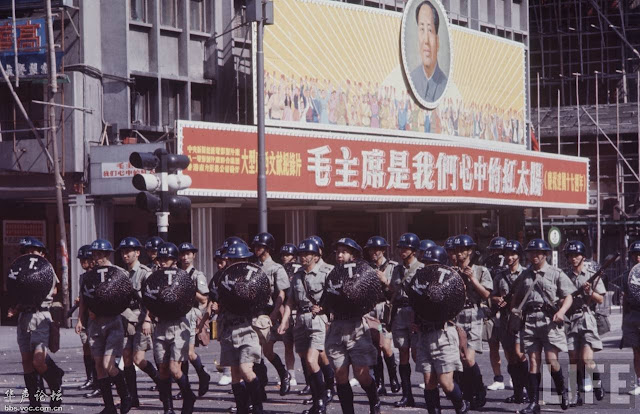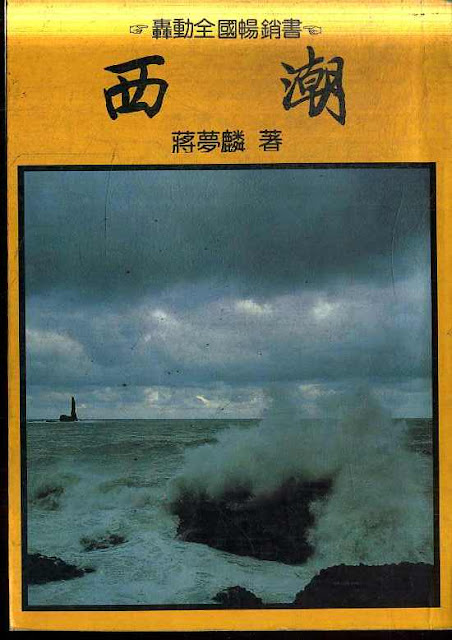The 1967 Riots from the Perspective of Hong Kong’s Core Values
 |
| The 1967 riots (Anti-British Anti-Violence Struggle) |
In 2004, a group of Hong Kong democrats published the Hong Kong Core Values Declaration, proclaiming these to be ‘liberty, democracy, human rights, rule of law, fairness, social justice, peace and compassion, integrity and transparency, plurality, respect for individuals, and upholding professionalism’. Although not widely recognised at the time, the idea of core values has gradually been permeating people’s consciousness since then. Those of the post-80s generation are likely to agree with the author, having grown used to clean effective government, public housing, comprehensive healthcare and nine-year compulsory education. However, none of these were inevitable.
The 1967 riots—or what its participants referred to as the ‘Anti-British Anti-Violence Struggle’—spanning from May to December 1967, were initiated by Hong Kong’s Leftist (pro-Beijing) forces, beginning with peaceful demonstrations evolving into violent insurrection. The events ended with 51 dead and over 800 injured, and by its conclusion the British colonial government had thoroughly changed the way it governed, going on to promote healthcare, education and clean government throughout the 1970s. In looking for a watershed when it comes to core values, one can’t avoid mentioning these riots.
Works in relation to the 1967 events
Cheung Ka Wai’s “Hong Kong Watershed: The 1967 Riots” (known in Chinese as “The Inside Story of the 1967 Riots”), published in 2000, was the first book to with the riots after the handover of Hong Kong. Later, Dennis Leung Ka Kuen’s “The Secrets of 1967” (published 2001 according to declassified British files), and “The History of Leftist Struggle in Hong Kong” (published 2002 to expound on certain policies and decision from a Leftist perspective) by Leftist journalist Chau Yik. In “The History of Leftist Struggle in Hong Kong”, the author’s intention is fairly direct: the obligation is to clear up certain questions raised by Cheung’s “The Inside Story of the 1967 Riots”[1].
All three of these books, which comprise the most important recent scholarship in Chinese on the riots, were written by news-workers: Cheung Ka Wai is deputy director of the Hong Kong news section for the South China Morning Post; Dennis Leung is chief editor of East Week, and Chau Yik, before his retirement, was Deputy General Manager of the Wen Wei Po. Cheung Ka Wai based his volume on documentation and interviews, with Dennis Leung concentrating on data analysis, whilst on top of these two works Chau Yik contributed much of his personal experience.
On human rights and the rule of law
The world’s most important international convention on human rights, the International Covenant on Civil and Political Rights (ICCPR), was passed by the United Nations General Assembly in 1966 (Resolution 2200A [XXI] ). Hong Kong’ own Bill of Rights Ordinance, a localised version of the Covenant, was only passed in 1991, 25 years after the Covenant itself.
Before 1991, Hong Kong had two constitutional documents: the Hong Kong Letters Patent and Hong Kong Royal Instructions, neither of which contained clauses ensuring human rights.[2] Hong Kong’s human rights record was far from good, and democracy did not appear before the final days of colonialism.
All three of these books touch upon the actions of the British Government in Hong Kong in 1967, including the arrest of journalists, the beating of people (sometimes to death), and the internment of cultural intellectuals, newspaper editors and performers. The record of human rights violations is indeed very long, especially in “The History of the Leftist Struggle in Hong Kong”, and the evidence is made clear. While there is no way to evaluate them all one-by-one, here are a few examples:
1. In order to prevent the Leftists from recruiting new followers in Hong Kong’s secondary schools, the government reduced the number of Leftist schools from 57 to 34, depriving many students of an education. At the same time, headmasters of Leftist schools were arrested and deported by plainclothes police. Clearly there was nothing that could amount to any form of diversity and tolerance in the actions of British Hong Kong in 1967.
2. To broker the release of British journalist Anthony Grey, being held without charge in Beijing, the authorities in Hong Kong arrested and imprisoned many from the Left to exchange their release for that of Grey. This constituted a clear case of government intervention in the law and a violation of the independence of the judiciary, let alone human rights.
3. Many harmless activities were made illegal, such as pamphlet distribution by students from St Paul’s College and fundraising at Belilios Girls’ School. Peacefulness and compassion were made another target of suppression.
Indeed, Hong Kong at the time had entered a period of martial law, and human rights violations could in retrospect be “forgivable”. The emergency act stipulated that the Governor could detain anyone without charge for up to seven days; however, this quickly became one seven-day segment followed by another, and Leftist leader Cai Weiheng was imprisoned altogether for a year and a half.[3]
On fairness and justice
Karl Marx wrote that ‘the history of all hitherto existing society is the history of class struggle’.[4] This viewpoint led to the advent of Conflict Theory in sociology. In short, this proposes that conflict is the driving force behind all social progress, and that without conflict there is no historical development. The Deputy Colonial Secretary at the time of the riots, Sir Jack Cater, said he believed that if the riots had not occurred, “the Hong Kong government would not have carried out any reforms”.[5] One could say that this was the perfect example of Marx’s theory.
For a long time before the 1960s, Hong Kong practised a laissez-faire policy, which gave extraordinary power to capitalists. The saying that “the Chinese needs no Sundays” is testament to the fact that Hong Kong’s development was indivisible from its lack of labour protection.
After Sir Murray MacLehose assumed office as Governor in 1971, Hong Kong was finally beginning to carry out a series of social reforms, with the product being the policy of “positive noninterventionism”, the logic of which was entirely contrary to that of the laissez-faire approach. An article I have written explains the distinction between the two:
“Sir Philip Haddon-Cave, then Financial Secretary, wrote in “Hong Kong’s Economic Growth: The Next Stage”, ‘We must acknowledge that sometimes intervention is pragmatic and must be done in order to protect Hong Kong’s economic stability’. He also warns against putting too much faith in the automatic adjustment mechanisms of the market and enumerates several of the market’s shortcomings, concluding that the government must intervene to redress these. This kind of logic does not emerge from classical liberalism, and nor do they represent the viewpoint of neoliberalism—they can only be explained through the reasoning of social liberalism.” [6]
Therefore, Hong Kong’s economic takeoff in the 70s and 80s cannot be attributed to a laissez-faire policy, but rather to the failure of laissez-faire policies in the 1960s and the subsequent conversion on the part of the government to a programme of economic intervention. To this day, many experts and members of the media continue to sing the praises of the laissez-faire policies. At the entrance to Apple Daily’s headquarters in Cheung Kwan O, stands a bronze statue of former Financial Secretary Sir John Cowperthwaite, promoter of Hong Kong’s laissez-faire policy. Academics such as Steven Cheung Ng-Sheong have frequently written to the Chinese government in recommendation of that policy.
If laissez-faire had been such a good policy, introducing it to the mainland would not be a problem; but if it were to result in large-scale rebellion like that of the 1967 riots, then the mainland, with such a great population, would surely endure much more than just 50 deaths and half a year of chaos.
Conclusion:
Were the riots a product of anti-colonialism or the Cultural Revolution?
“The Inside Story of the 1967 Riots” identifies the riots as a product of the Cultural Revolution’s influence on Hong Kong. There are three reasons for this: first, the Foreign Ministry had at that time already been seized by the ultraleft “Rebel Faction”, who believed that supporting the riots represented the imperative to “crush imperialism, revisionism, and the allied anti-China conspiracy.”[7] Second, Hong Kong had just recently experienced price hikes, and other unresolved grievances aggravated by the beating of workers. Finally, the Leftists held aloft the Little Red Book of Mao Zedong’s quotations, and such behaviour was suggestive of the Cultural Revolution.
Obviously, this type of discussion serves to weaken the local nature of the riots; it must be pointed out that if the riots received no popular support whatsoever it would have been impossible for them to last as long as they did. A simple point of reference is the 1956 “Double Ten Riots”. As is well known, the majority of Hong Kong’s population consists of those who escaped communism in the mainland. Professor Li Ruojian of Guangzhou’s Sun Yat-sen University points out that “Hong Kong’s population increase resulting from migration in 1950 was 186%, a large proportion of which were political officials and military officers associated with the Kuomintang regime and their families”.[8] It follows that inevitably the number of Nationalists in Hong Kong would far outstrip the number of Communists, but even under these circumstances, the “Double Ten Riots” could only last one month, and at a smaller scale than the 1967 riots which lasted for half a year — thus illustrating that many people who held a neutral standpoint had participated in the 1967 riots.
Today, we enjoy human rights, equality, the rule of law and other such core values. Regardless of their being right and wrong, all of these began to emerge from that period in history. It is unfair that this historical period has not received the attention that it deserves, for its relevance to modern Hong Kong and how it should be governed today is still of immense importance.
written by Jeremy LEE Yim
translated by Ryan Kilpatrick
NOTES
- Chau Yik:“The History of Leftist Struggle in Hong Kong”, Hong Kong: Liwen, 2002, PXIII
- “Hong Kong Letters Patent”, Department of Justice, Bilingual Laws Information System: http://www.legislation.gov.hk/blis_ind.nsf/da97f6a8ed400207482564820006b580/0128732b1eae01ca482567f60012406a
- Chau Yik 2002. Introduction by Cai Weiheng, P.IX
- Marx 1848. The Communist Manifesto.
- Cheung Ka Wai 2000. “The Inside Story of the 1967 Riots”. Hong Kong: Pacific Century. P.6
- Jeremy Lee. “The Origins of ‘Positivism’ in Positive Noninterventionism”, Economic Weekly, 13/11/2006.
- Cheung 2000, p. 45
- Li Ruojian. “Research on Population Immigration from Mainland China into Hong Kong” (Zhongguo Dalu Qianru Xianggang de Renkou Yanjiu), Population and Economics, November 2009.



留言
張貼留言